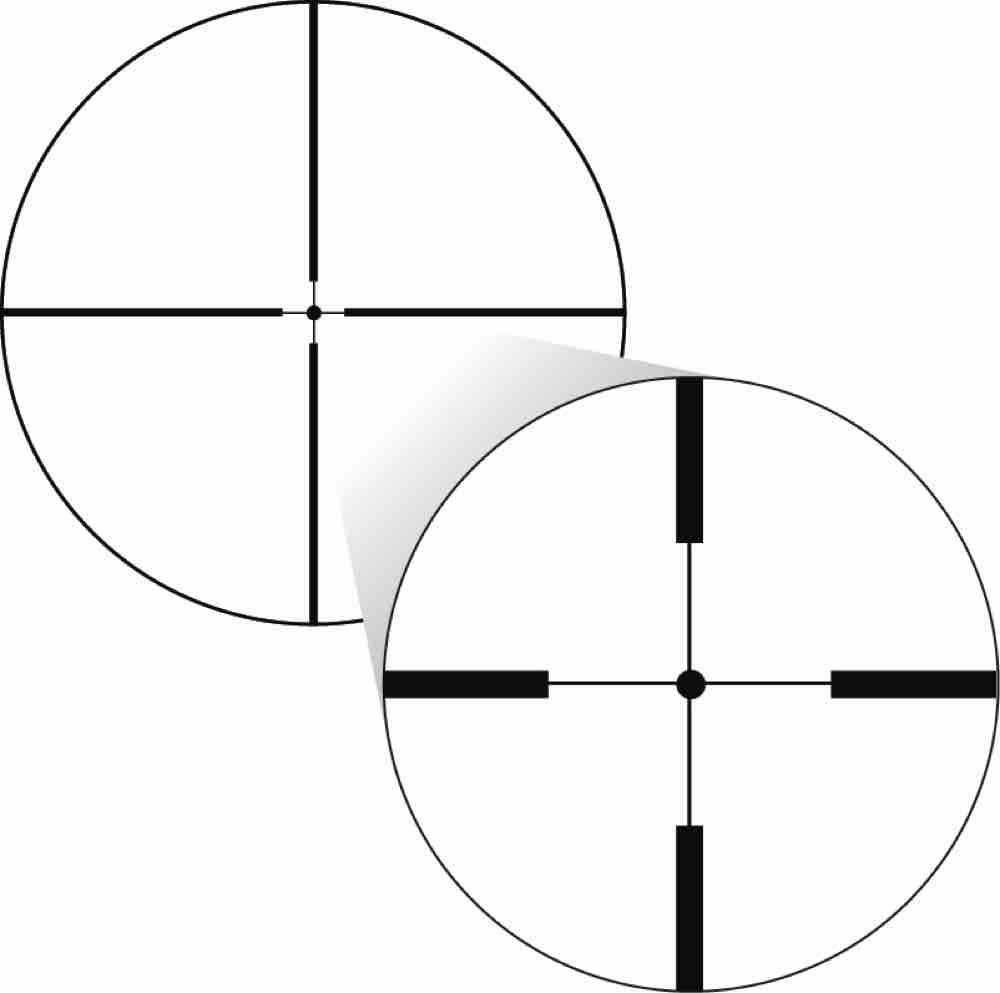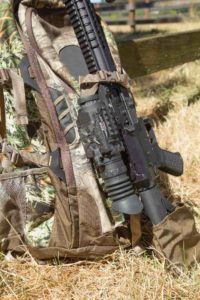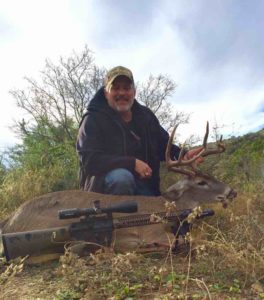
Hey there, fellow hunters! If you’re looking to up your game and increase your chances of success, you’ve come to the right place. In this article, I’ll be sharing some proven tactics that will take your hunting experience to the next level, all thanks to premium rifle scopes.
From choosing the right magnification to understanding reticle options, we’ll cover it all. So, get ready to enhance your hunt and achieve optimal results with these valuable tips and tricks.
Let’s dive in!
Choosing the Right Magnification for Your Rifle Scope
What is the appropriate magnification for my rifle scope depends on the kind of hunting I am doing. Additional considerations also come into play.
When it comes to choosing the right magnification for your rifle scope, it’s crucial to find the perfect balance between clarity and usability. A higher magnification may seem like the obvious choice, but it’s important to remember that a higher magnification also means a smaller field of view. This can make it difficult to quickly acquire and track targets, especially in fast-paced hunting situations.
On the other hand, a lower magnification may provide a wider field of view, but it may compromise the detail and precision needed for longer-range shots. It’s a delicate balance that requires careful consideration.
For most hunting situations, a magnification range of 3-9x or 4-12x is often recommended. This allows for versatility in various hunting scenarios, from dense woods to open fields. If you primarily hunt in dense woods or close quarters, a lower magnification range may be more suitable. On the other hand, if you often find yourself taking long shots in open fields, a higher magnification range may be necessary to ensure accuracy.
[Be sure to see our article What Do the Numbers on a Rifle Scope Mean?]
Ultimately, the choice of magnification will depend on your personal preferences, hunting style, and the type of game you pursue. It’s important to test different magnification ranges and consider factors such as target acquisition speed, field of view, and shot accuracy before making a final decision. Remember, the right magnification can make all the difference in enhancing your hunting experience and ensuring a successful hunt.
Understanding Reticle Options for Precision Shooting
To achieve precision shooting, it’s important to understand the different reticle options available. When it comes to rifle scopes, the reticle is the aiming point that helps you align your shot accurately. There are several types of reticles to choose from, each with its own unique features and benefits.
One popular reticle option is the duplex reticle. It features a simple crosshair design with thicker outer lines and thinner inner lines. This type of reticle is great for quick target acquisition and is widely used for hunting purposes.
Another option is the Mil-Dot reticle. It consists of small dots spaced evenly along the crosshair, allowing for precise range estimation and bullet drop compensation. This reticle is commonly used by long-range shooters and military snipers.
For those who prefer a more advanced option, the illuminated reticle is worth considering. This type of reticle offers illuminated markers that can be adjusted in brightness to suit different lighting conditions. It enhances visibility in low-light environments and helps maintain accuracy.

Lastly, the BDC (Bullet Drop Compensation) reticle is designed to compensate for bullet drop at various distances. It features additional aim points below the center crosshair, corresponding to different ranges. This reticle is great for shooters who frequently engage targets at different distances.
Understanding these reticle options can greatly enhance your precision shooting capabilities. By choosing the right reticle for your needs, you can improve accuracy, speed, and overall shooting performance. So, take the time to research and experiment with different reticles to find the one that works best for you.
Adjusting for Wind and Elevation With Your Rifle Scope
Adjust for wind and elevation using your rifle scope’s adjustable turrets. When it comes to precision shooting, understanding how to make these adjustments is crucial. Here are three key steps to help you effectively adjust for wind and elevation with your rifle scope:
- Determine the wind direction and speed: Before making any adjustments, it’s important to assess the wind conditions. Pay attention to the direction the wind is blowing and estimate its speed. This will help you gauge the amount of compensation needed.
- Make elevation adjustments: Once you have determined the wind conditions, it’s time to adjust for elevation. Use the elevation turret on your rifle scope to compensate for the bullet’s drop at different distances. Familiarize yourself with the markings on the turret and make the necessary adjustments based on your target’s distance.
- Adjust for windage: Wind can significantly impact the trajectory of your bullet. To compensate for wind drift, use the windage turret on your rifle scope. Estimate the wind’s effect on your shot and make the appropriate adjustments by dialing in the required windage.
Mastering Long-Range Shots With Premium Rifle Scopes
With my premium rifle scope’s powerful magnification and precise adjustments, I can confidently master long-range shots. The ability to accurately hit targets at extended distances is a skill that every hunter aspires to achieve. Long-range shots require a combination of skill, knowledge, and the right equipment. A premium rifle scope is an essential tool in this pursuit.
The powerful magnification of my premium rifle scope allows me to clearly see and identify targets that are far away. This enables me to make precise adjustments and take accurate shots. The clear and crisp image provided by the scope ensures that I can see even the smallest details of my target, such as antler tines or subtle movement, helping me make informed decisions.
In addition to magnification, my premium rifle scope also offers precise adjustments. These adjustments allow me to compensate for factors such as bullet drop and wind drift. By making small adjustments to the scope’s elevation and windage, I can ensure that my shots hit the intended target, even at long distances.
To master long-range shots, it’s essential to practice regularly and become familiar with the capabilities of your premium rifle scope. This includes understanding the scope’s reticle and how to use it for accurate shot placement. With practice and the right equipment, I can confidently take on long-range shots and increase my chances of a successful hunt.
Enhancing Low-Light Performance for Optimal Hunting Success
How can I enhance my premium rifle scope’s low-light performance for optimal hunting success?
When hunting in low-light conditions, it’s essential to maximize the capabilities of your rifle scope. Here are three proven tactics to enhance your premium rifle scope’s low-light performance and increase your chances of a successful hunt:
- Choose a scope with a larger objective lens: The objective lens is responsible for gathering light and transmitting it to your eyes. Opt for a scope with a larger objective lens size, such as 50mm or above, to allow more light into the scope, resulting in brighter and clearer images.
- Look for scopes with illuminated reticles: lluminated reticles are designed to provide better visibility in low-light situations. These reticles have adjustable brightness settings, allowing you to customize the illumination level based on the ambient light conditions. This feature ensures that your reticle remains visible and helps you aim accurately, even in dimly lit environments.
- Consider scopes with low-light or twilight performance features: Some premium rifle scopes are specifically designed to excel in low-light conditions. These scopes may have features like enhanced light transmission coatings, specialized glass, or illuminated reticles specifically optimized for low-light situations. Investing in a scope with these features can significantly improve your ability to spot targets and take accurate shots in challenging lighting conditions.
Conclusion
After exploring the various tactics and features of premium rifle scopes, it’s clear that these tools can greatly enhance your hunting experience. From choosing the right magnification to adjusting for wind and elevation, these scopes offer precision and accuracy.
Mastering long-range shots becomes more attainable with the help of premium rifle scopes, and their ability to enhance low-light performance ensures optimal hunting success.
Invest in a premium rifle scope and take your hunting to the next level.





